- Home
- Will Hobbs
Ghost Canoe Page 5
Ghost Canoe Read online
Page 5
For an hour or more he climbed up the steep mountainside, here and there crossing faint trails. He climbed so high that he entered the cloud that for much of the winter, from Tatoosh, he’d seen clinging to the summits of the twin mountains above Cape Flattery.
It was eerily quiet as he walked on the spongy forest floor among the misty, ghostly shapes of the giant trees. He couldn’t see to their tops or even a hundred feet ahead of him. But as he reached the summit of the first mountain, he could hear the fog trumpet on Tatoosh sounding its deep-throated warning, and he realized he could navigate by it all the way down to the tip of the Cape. He also remembered his father’s warning about being careful, and he felt a twinge of guilt.
Nathan walked the saddle between the mountains until he stood atop the second summit. He saw nothing, being inside the cloud, but knew exactly where he was. Tatoosh lay directly ahead toward the foghorn. A few degrees to the left, Fuca’s Pillar. A few degrees to the right, the Strait of Juan de Fuca. He would bear only slightly to the right of the horn, and that would lead him to the cliffs, above the spot where he’d seen the smoke in the jumble of seastacks.
He wove his way through thickets of salal bushes and salmonberry vines, and alongside a giant, decomposing log that had a row of young cedars growing in an arrow-straight line along its entire length. He happened to glance up through a break in the trees. A familiar yet entirely unexpected shape up in the foggy branches made him stop and stare and wonder if his eyes were deceiving him. Yes, it was really there, twenty feet up in the air, resting on a platform that had been constructed across the branches of a giant spruce: a Makah canoe.
He stood there staring and staring, confounded by the uncanny sight. A hundred other times, he realized, he could’ve walked right by and never realized it was there.
What the canoe was doing up there, he couldn’t begin to imagine. He only knew he had to find a way to get up in the tree and take a closer look.
A hundred yards away he found a young hemlock that had died for lack of light, then had been uprooted by the wind. He got lost trying to find the canoe again. In this forest, it could be seen only from that certain angle. At last he stumbled across the place again, and succeeded in dragging the young hemlock back to the big spruce. The canoe was still up there, like an apparition in the cloud. He rested, and then he stood the hemlock up, dragged it into position, and lowered it until it rested against the lowest branch of the spruce. It needed a bit of a twist until its own branches locked against the branches of the spruce and kept it stable.
Nathan threw off his oil slicker and even his sou’wester. He was a strong climber, but he needed to climb unencumbered. Up the hemlock he went, hand over hand, until he stood on the lowest branch of the spruce. He caught his breath, and then he climbed up to the level of the canoe.
His first glimpse inside caught him completely unprepared, and took his breath away. He was looking at an ancient human skeleton, including the skull, in the rear of the canoe. The bones had crumpled into something of a heap, but Nathan could still make out the shape, the arms, the legs, the ribs, as they might have looked if they’d still been connected to each other. The handle of a canoe paddle rested close by the bones of a hand. The paddle was covered with moss and badly decayed. The canoe itself was spongy and entirely covered with a thick blanket of moss.
His eyes went back to the empty eye sockets of the skeleton. Like everything else in the forest, they and the entire skeleton had a greenish cast. He had seen the bones of animals before, but never the skeleton of a human being. This is bad, he thought. Hyas cultus—I shouldn’t be here! Though every nerve in his body was buzzing, he told himself not to be afraid.
Curiosity made him linger. A coil of rope caught his eye, heavy rope like he’d seen back in the village. He couldn’t tell what it was made from—perhaps cedar bark and some sort of animal sinew braided together. The rope was badly decayed. Alongside the coil of rope lay a hefty spear more than a dozen feet long. The spearhead was fashioned of mussel shell, with twin antler tips, like barbs, attached at the base. Next to the spear lay a wooden club carved in the image of a seal. Near the club a large round hole had apparently been punched in the bottom of the canoe. Drops of water were falling through it to the forest floor below.
Nathan wanted to reach for the spear and the club and take them in his hands. They looked firm enough to handle without breaking. But he would have had to leave the tree branch where he was standing, and get out on the planks that supported the canoe. They appeared to be too rotten to hold him.
He was about to turn and go when the unnaturally square shape of a small box caught his eye, just behind the skeleton at the very rear of the canoe, very close to where he was standing. Carefully, he reached down for the box. His fingers could barely reach that far, but he was able to grasp it and retract it without touching the bones.
The box, unlike the canoe, was still sound. Shielded from the rain by the wide seat used by the paddler at the stern of the canoe, the small cedar box had been preserved over untold decades. For a moment he thought he shouldn’t look in the box—there might be something gruesome inside.
I’ll just take a peek, he told himself. As he held the box to his belly, his fingers pried at the lid.
Finally it came loose. He was relieved to see two innocent-looking objects fashioned from bone: smooth cylinders, about two and one-half inches long, shaped like miniature barrels. Toward the ends, each was ringed with two rows of tiny circles that had dots in their centers. One of the cylinders was banded around its middle with countless wraps of fine black string of some kind; the other was all bone. He took the unwrapped one in his fingers and felt its smoothness. It was yellow with age and shiny, perhaps from long handling. It felt like it was made to be handled.
The bone cylinders had been kept perfectly dry through the years by the integrity of the cedar box. They were in perfect condition. Lighthouse George would know what they were. If he were to take one, just to learn what it was, he could always put it back.
I can describe it without taking it, he told himself. What would George think if I took something from a Makah grave?
The answer was obvious. He replaced the small cedar box with its two bone cylinders exactly where he’d found it, careful once again not to touch the skeleton.
Nathan took one last look at the canoe. Its high, curving prow was carved in the image of a man-bird, with tall ears that stood atop its head. As the foghorn on Tatoosh gave another of its deep three-second blasts, he realized that the canoe was pointed directly at the open ocean. The man had been buried so he would be looking eternally out to sea.
7
A Glimmer in the Dark
Every twenty-seven seconds came the blast of the foghorn on Tatoosh. Bearing slightly to the right, Nathan steered toward it as he descended to the tip of the Cape. Behind him, the forest had swallowed up the burial canoe, and he had to convince himself that he had not dreamed it.
He had misgivings—about looking for the plume of smoke, about what he might find, about being so far from the village. He had misgivings now about this strange forest itself. It was brooding and dark and mysterious, and if it wasn’t evil in itself, it was a perfect place for evil to hide. A shiver ran through his bones as he paused and looked all around. He thought about returning to the cottage as quickly as possible.
Be brave, he told himself. And be alert. There’s no evil in the forest. Evil, as his father had pronounced many times before, lurks only in the hearts of men.
Before he could see the seastacks offshore, he could hear the surf pounding them. Be careful you don’t walk right off the cliffs, he told himself.
It didn’t really make sense that a man could be living out at the tip of Cape Flattery. It had been several weeks since the wreck of the Burnaby. Why wouldn’t a survivor have made his way to the village?
Because he killed Captain Flagg, came the inescapable answer. He’s biding his time until he can get away. It’s not so easy to es
cape when no roads lead into the interior, a vast and impenetrable wilderness.
No one else will believe it, Nathan told himself, unless I find something, see something.
The trees began to decline in size and number as he got closer to the sea. As he reached the bluffs above the cliffs, he found them stunted and windblown, leaning drastically inland. Now he could begin to see the jumble of colossal seastacks offshore that were remnants of the former mainland. Some of the giant rocks were crowned with living trees. Keeping the Strait on his right and fighting his way through devil’s club and salal bushes, he came to a place where the view opened as the cliff bent sharply inland.
Nathan found himself standing above a cove behind the seastacks, where the sea had carved a spearpoint-shaped defile hundreds of yards into Cape Flattery’s headlands. This hidden cove, he realized, was the Hole in the Wall. He was looking hundreds of feet right down into it. It was a wild and tumultous scene below, as the foaming sea, thick with waving, uprooted bull kelp, rushed through massive cavetunnels in the seastacks and surged against the base of the cliffs.
Nowhere did he see a beach or any place that would shelter a human being. The plume of smoke, he admitted now, had been purely a figment of his imagination. But he couldn’t see all of the hidden cove from where he was standing, so he decided to go on a little farther to see if it might be possible to gain a different vantage point.
Where the cliffs turned back in the direction of the sea, he found a creek plunging through a break in the cliffs. If he could follow the path of the creek, he realized, it would take him all the way down to salt water.
Before long, the creek tumbled over a rock face and plunged down a waterfall. He was stopped, unless…To his right, something had caught his eye, something vaguely unnatural. A bit closer and he realized he was looking at ancient, moss-covered stone stairs leading down into the Hole in the Wall.
The skin on the back of his neck felt suddenly like it was being pricked with needles. He looked all around, full of apprehension. Quit making yourself afraid, he thought, and started down the stairs, quietly, cautiously.
The stairs brought Nathan around and below the waterfall. Now he could see the surf lapping, far below, against a tiny beach of dark sand. He proceeded down the ravine alongside the roaring creek, arresting his descent by clinging to roots and downed trees that had been toppled by the wind. Nowhere did he see a skid mark on the soggy slope, or even a place where the moss had been disturbed. He was reassured that he wasn’t about to surprise a murderer. But still, he wanted to make it all the way down to sea level, to see what it would be like down in the hidden cove behind the rocks and below the secret stairs.
At last he stood on the beach. It was no more than a hundred feet long, only a narrow strip with the tide high, as it was now, and it didn’t have a footprint on it, or a shelter of any kind, or even the smell of smoke. At last he breathed easy, and he walked along the waterline, picking his way through driftwood and kelp. His eyes were drawn to the surf pounding its way toward shore through the caves in the monumental seastacks. He could see three caves right from where he was standing.
Nathan’s eyes returned to the beach at his feet, and he realized he was looking at bits of charcoal, barely above the waterline, left behind by the ebbing high tide. They hadn’t been noticeable at first against the dark sand, but they were there.
Did the charcoal wash here all the way from Neah Bay? Or did it wash down a creek and into the sea?
He walked to the west end of the beach, where a rocky outcrop extending from the cliff prevented him from proceeding any farther. Or did it? He was a good climber.
He’d leave his oil slicker behind; it was much too cumbersome. If he could just get up on that outcrop and take a look beyond…
Nathan wasted no time. The day was getting on now, and he’d have to start back soon and hurry all the way to make it home before dark. He scrambled up and up until he was looking around the corner at another small beach. This one had a cave in the cliff at the far end. He looked for footprints along the shore, but the beach looked pristine, as if it had never been walked upon.
He almost turned back, but then he realized there was a way to get down to the second beach. It wouldn’t take but a few minutes to go look at that cave. Once down, he walked the beach, finding more charcoal along the sand and in the waves lapping the shore. At the entrance of the cave, he found himself looking at a pile of clam and mussel shells just inside. He wondered what creature would bring clams and mussels here, to break them open in the shelter of a cave. A raccoon, he decided, or possibly a bear. It had to be something clever with its hands.
The cave, he suddenly realized, smelled of wood-smoke. But his mind was working too slowly to stop his feet. Another step into the darkness and he felt his rubber boot crunch something underfoot. He knelt and turned the other direction, toward the light, to see what it was. Charcoal. Suddenly his heart was pounding in his ears.
Nathan spun around, peering into the darkness again. He heard, or believed he heard, the sound of breathing, someone or something breathing. Straining to hear, he stopped breathing himself.
Now he heard nothing at all.
A full minute later he heard the breathing sound begin again, faint yet unmistakable. Whoever, whatever it was, was close, much too close.
Then he saw, as his eyes were becoming accustomed to the near darkness, a glint of metal. It was hard to tell, but he thought it might be a knife he was seeing. The knife was slowly being raised by a shadowy arm attached to the barest-perceptible silhouette of a man with a shaggy beard and a huge head of hair.
There…the glimmer of two eyes in the dark!
He fought the impulse to turn and run. His best chance was to pretend that he had heard nothing, seen nothing. He shrugged and, with his heart hammering, slowly turned his back on his danger, and walked out of the cave and into the light.
Only once, when Nathan was climbing the rock outcrop at the end of the beach, did he look back. He was sure he would see a man with a knife at the cave entrance. He saw nothing.
Still, when he dropped from the outcrop to the first beach and collected his oil slicker and sou’wester, he broke into a run. All the way up the steep ravine, he climbed as fast and as hard as he could. He never looked back. When at last he reached the ancient stairs that led around the waterfall and up to the top of the cliffs, he finally stopped to gulp air. He looked back down the way he had come, expecting the man to be pursuing him. Nothing.
Once atop the cliffs, Nathan took off at a dead run, keeping the sound of the sea on his left. He never stopped running. In his haste he couldn’t find trails to follow, even game trails. It was getting murky under the canopy of the ancient trees. Dark was coming on fast. He clawed his hands through thickets of devil’s club, salal, and salmonberries. At last he could hear a dog barking in the distance. He was getting close to Neah Bay and his mother’s cottage. He kept running. It was an utter shock when, in the near dark under the forest canopy, he burst upon a man who was burying something with a shovel.
The man—an enormous bearded man in a black coat—let out a cry of surprise and terror, and pulled a revolver from under his coat. The gun was aimed squarely at Nathan.
“Captain Bim!” Nathan implored, guessing from the shape of him who it was.
The man’s voice was trembling. “Young MacAllister?”
Nathan’s eyes took in the dark shape of what appeared to be a small metal box that the trader had been burying. “Of course…it’s just me. Am I glad it’s you!”
Captain Bim put his revolver down. His voice thundered, “You took five years off my life!”
“I’m sorry…. You took ten off mine!”
“Young man, you just came within an eyelash of meeting your maker! What are you doing here?”
“I’ve been…exploring.”
“Exploring! I thought I warned you to stay out of that forest.”
Nathan’s eyes went back to the box. A strongbox,
that’s what it was. He thought better of asking Captain Bim what he had been doing. “I think I found someone in a cave,” he said instead. “Out at the Hole in the Wall.”
The trader was dumbfounded. “You think you found someone in a cave? This is what you have to say for yourself?”
“At a little beach out near the tip of Cape Flattery. It’s the survivor of the shipwreck. I mean, what if it is? What if it’s the murderer! I saw a glint of light. It could have been from the knife that was stolen from your store.”
“What exactly did you see?”
“Nothing exactly—it was so dark. Maybe two eyes. Maybe a man with a lot of hair and a beard. It was in a sea cave. I heard him for sure.”
“What exactly did you hear?”
“Breathing. When he wasn’t holding his breath. Oh, and I also saw lots of shells from mussels and clams that he’d been eating.”
“Footprints?”
“The high tide had washed them away. Will you tell the Makahs tonight?”
With a laugh, the trader said, “Sounds like you’ve let your imagination run away with you!”
“What do you mean?”
“A lot of hair, and a beard, and some breathing…You’ve seen the Hairy Man! The Makahs will think you’ve seen the Hairy Man!”
“It’s not a joke, Captain Bim! If you see Lighthouse George, will you tell him what I saw?”
“If you say so.”
“I saw something else, too—a canoe up in a tree.”
“I hope you didn’t explore that.”
After the briefest hesitation, Nathan said, “I told you, it was up in a tree.”
“I call that a ghost canoe. There’s a few of them tucked away here and there in the woods. That was an old burial you were looking at.”
“Why would it be in a tree?”
“That’s one of the ways the Makahs used to bury people, especially important ones. Probably there’s the remains of a chief up in that canoe, and some of his personal effects for use in the afterlife.”

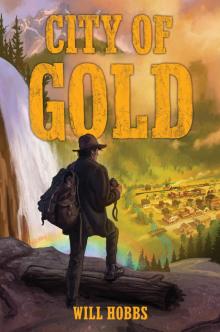 City of Gold
City of Gold Kokopelli's Flute
Kokopelli's Flute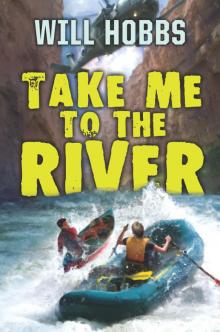 Take Me to the River
Take Me to the River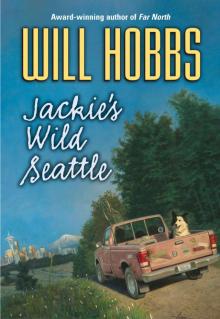 Jackie's Wild Seattle
Jackie's Wild Seattle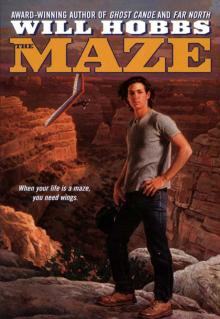 The Maze
The Maze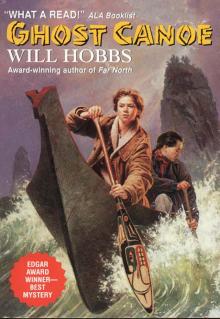 Ghost Canoe
Ghost Canoe Never Say Die
Never Say Die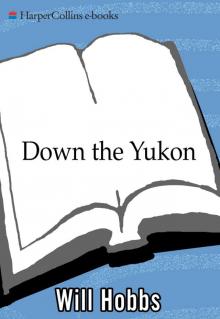 Down the Yukon
Down the Yukon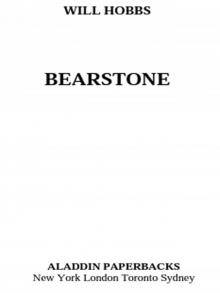 Bearstone
Bearstone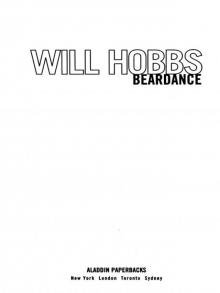 Beardance
Beardance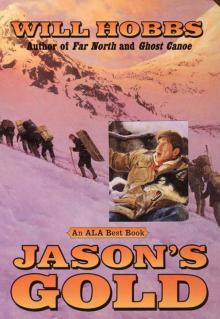 Jason's Gold
Jason's Gold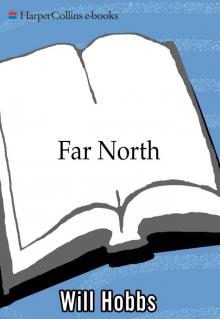 Far North
Far North The Big Wander
The Big Wander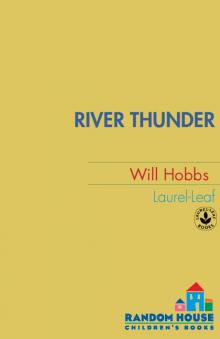 River Thunder
River Thunder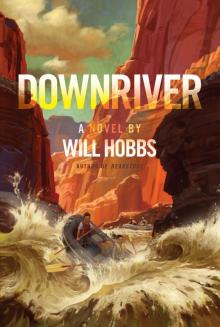 Downriver
Downriver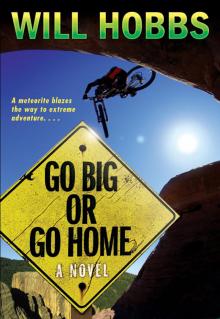 Go Big or Go Home
Go Big or Go Home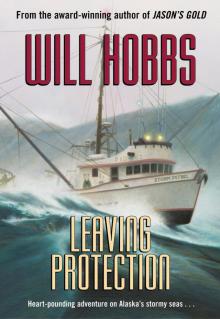 Leaving Protection
Leaving Protection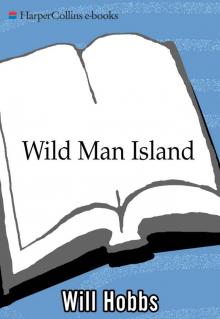 Wild Man Island
Wild Man Island